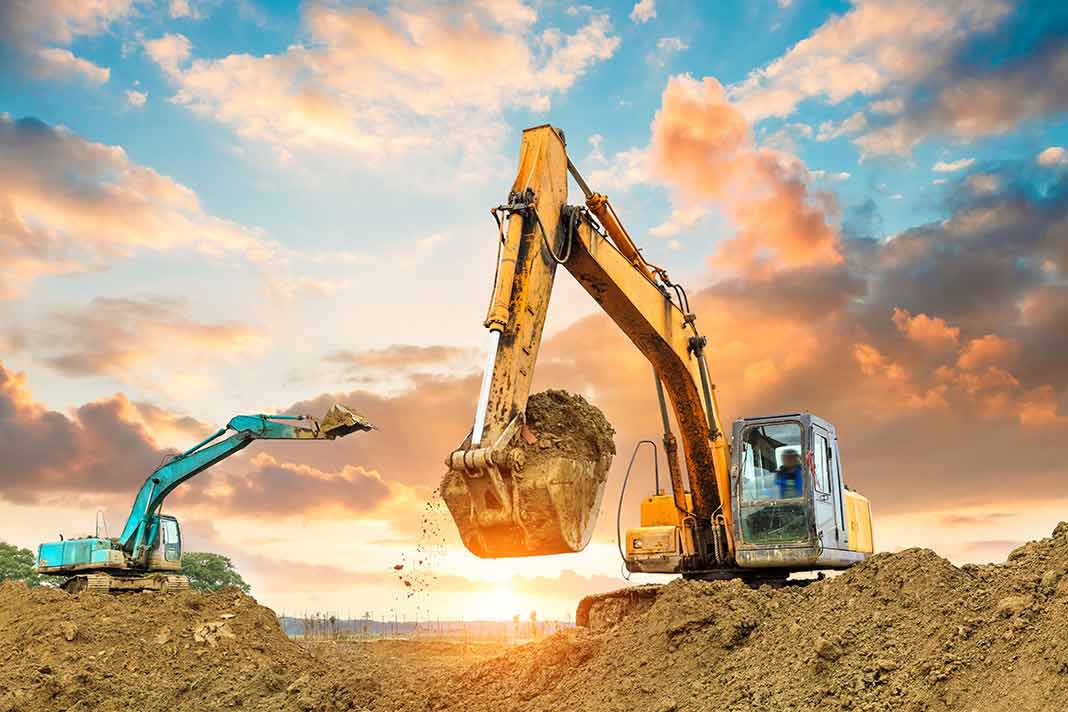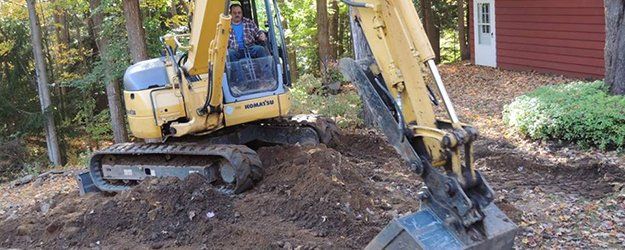Economical Lancaster Excavation - High Quality Excavation at Competitive Costs
Economical Lancaster Excavation - High Quality Excavation at Competitive Costs
Blog Article
Extensive Exploration: The Science Behind Superior Excavation Practices
The world of excavation techniques is a domain where science intertwines with workmanship to uncover the mysteries hidden underneath the planet's surface area. From ancient hand tools to modern hydraulic excavators, the development of excavation strategies has actually been a testament to human ingenuity and technical advancements. What really sets remarkable excavation techniques apart is a deep understanding of geological concepts, paired with the application of sophisticated devices and techniques. By discovering the scientific research behind these methods, we can discover the tricks that lie under our feet and value the precision and proficiency that enter into every dig.
Advancement of Excavation Techniques
Throughout background, the development of excavation methods has actually played a critical role beforehand construction techniques and historical explorations. From the fundamental devices utilized by our forefathers to the advanced equipment used in contemporary times, the development of excavation techniques has significantly changed how we come close to various tasks.
In ancient times, manual work with fundamental devices such as pickaxes, wheelbarrows, and shovels was the primary method of excavation. This labor-intensive procedure limited the deepness and extent of excavations, commonly leading to slow-moving progress and limited access to specific websites. As people advanced, so did the tools and strategies utilized for excavation.
The Industrial Revolution noted a turning point in excavation methods with the introduction of steam-powered equipment. In contemporary times, technology plays a critical function in excavation, with improvements like General practitioner systems, drones, and 3D scanning boosting accuracy and performance in the area.
Function of Innovation in Excavation

The assimilation of innovative innovation has fundamentally changed the area of excavation, improving precision and performance to unmatched levels. One of the vital technical developments that has actually dramatically affected excavation practices is the usage of GPS systems. These systems permit exact mapping of excavation sites, making it possible for operators to accurately situate underground utilities and structures. Furthermore, making use of telematics in excavation tools has actually enabled real-time surveillance of device performance, resulting in positive upkeep and raised functional performance.
Furthermore, the introduction of 3D modeling and simulation software program has streamlined the planning procedure for excavation tasks. Engineers and drivers can now envision the entire excavation procedure prior to beginning, enhancing and recognizing potential obstacles workflow. Along with this, the execution of drones in excavation tasks has assisted in airborne studies, volumetric dimensions, and site evaluations with unequaled rate and precision.
Geological Concepts in Excavation
An understanding of geological principles is important for guaranteeing the architectural stability and stability of excavation websites. Geological aspects play a critical duty in determining the feasibility and safety of excavation tasks.
By conducting comprehensive geological studies and analysis, engineers and excavators can develop methods to mitigate dangers and make certain the successful conclusion of excavation projects. Eventually, incorporating geological principles right into excavation methods is crucial for important site accomplishing secure, effective, and lasting outcomes.

Latest Tools for Excavation
In the realm of excavation methods, modern innovations in devices have actually changed the performance and accuracy of excavation procedures. Among the most recent devices making waves in the industry is making use of drones outfitted with advanced imaging modern technology. These drones can offer in-depth aerial surveys of excavation sites, using real-time data on topography and potential hazards. This information help in much better planning and decision-making during the excavation procedure.
One more cutting-edge tool acquiring appeal is the implementation of 3D printing technology for developing personalized excavation tools. This allows for the production of specialized these details devices that are customized to the details requirements of a job, boosting performance and decreasing downtime.
In addition, improvements in products scientific research have brought about the growth of stronger and more resilient excavation devices. lancaster excavation. Tungsten carbide-tipped excavator add-ons, for instance, deal exceptional performance in difficult ground problems, improving performance on-site
Science's Influence on Excavation Practices

Furthermore, scientific research on soil mechanics and geotechnical engineering has provided useful understandings into soil behavior, permitting excavation specialists to make informed decisions pertaining to excavation methods and soil stabilization techniques. Overall, science proceeds to drive technology and enhancement in excavation methods, making excavation tasks a lot more efficient, cost-efficient, and lasting.

Verdict
In conclusion, the evolution of excavation techniques has actually been substantially affected by advancements in innovation and a much deeper understanding of geological principles. The most up to date tools and tools made use of in excavation have enhanced effectiveness and accuracy in the area. The application of clinical knowledge has dramatically enhanced excavation techniques, bring about more reliable and lasting techniques for excavating numerous types of blog materials.
In the world of excavation methods, modern advancements in tools have reinvented the effectiveness and precision of excavation processes. By leveraging scientific principles, the excavation sector has actually been able to dramatically boost effectiveness, accuracy, and safety in excavation procedures. GPR permits excavation teams to non-invasively scan and map subsurface frameworks, energies, and prospective risks, enabling them to intend excavation jobs with greater precision and lowered danger of accidents.
Additionally, clinical research on dirt auto mechanics and geotechnical engineering has actually offered valuable understandings into soil actions, enabling excavation professionals to make enlightened decisions regarding excavation approaches and soil stabilization methods. In general, science proceeds to drive development and renovation in excavation techniques, making excavation jobs more reliable, affordable, and lasting.
Report this page